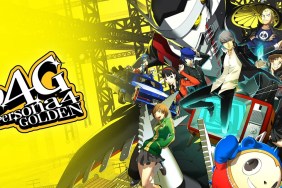Guitar Hero is not Rock Band. It swears.
Guitar Hero World Tour is the kind of game you want to be good because of its history. Despite now being marketed as a tribute to Aerosmith, a “risky” toy for Heidi Klum, a hand vice for the DS, and a greasy carrying case for KFC, Guitar Hero still holds the honor of being the title that rejuvenated the rhythm genre with a swift tilt of star power. A thin, flimsy, black PS2 guitar controller still sits in the corner of my living room as a reminder of the days when there was no such thing as three-note chords, when the star power meter wasn’t turned into bulbs, and when people never stopped to point and laugh at those nerds with fake guitars. Okay, maybe that last one still happens. But at least now the guitars are heavy enough to knock out any nearby offenders.
[image1]With the advent of two Rock Band installments, Guitar Hero has had to play substantial catch-up and has obviously tacked on a microphone, some drum pads, and the words “World Tour” to its name perhaps to hide the fact that it’s still called “Guitar” Hero. The guitar and the bass are still the stars of the show, and they are the most polished by virtue of experience.
The new guitar/bass not only sports a sturdier, sunburst design, but several added features set itself apart from the Rock Band guitar. The least significant addition is the star power button, which you can press to activate star power without having to tilt the guitar. Though it’s a shortcut made for beginners, it’s not really worth it. Pressing it requires you to either awkwardly extend your pinky to reach it (if your hand is long enough) or actually move your hand off the strum bar and there are usually too many notes whizzing by to do any gesticulation. In lieu of Rock Band’s solo buttons, a touch-sensitive slider strip has been placed below the five fret buttons. It’s an optional way to play and alter the sound of the new slider notes (notes that are connected by a purple line), but it does allow you to literally tap each note instead of strumming.
On the subject of new notes, bassists will especially appreciate the open string note, which appears as a straight purple line similar to the bass pedal line for drums. Simply strumming without pressing down a note is more difficult than even expert guitar players would expect, because the natural instinct is to hold down a fret as it saves time and there’s no penalty for it. More than that, the open string note finally makes the bass stand out instead of just being sidelined as a Medium-difficulty guitar line and as the instrument that no one wants to be stuck with.
Unfortunately, some of the flaws of World Tour are along the same line of those of the first Rock Band – that is, the other peripherals. If you have already listened to our podcast, you know that GR has had sensitivity issues with the World Tour drum sets, which has three drum pads, two cymbal pads, and one bass pedal. The bass pedal, though not steel-reinforced like the one for Rock Band 2, can be easily placed anywhere beneath the set and has grooved padding that makes sure it won’t move around, at least on carpet. If you have hardwood floors, you’ll have trouble keeping it from running away.
[image2]The pads, however, suffer from not only being cramped – the cymbals aren’t placed far enough from the pads to feel like real cymbals – but they don’t register consistently. Despite our best efforts to adjust the sensitivity on two drum sets using a MIDI to USB cable and the drum sensitivity application provided by Activision, the pads still occasionally miss a well-placed, well-struck hit by the drum sticks. This won’t be much of a problem for “I just want to pass” drummers who play on anything lower than Hard difficulty, but any quick rolls will likely break the 4x multiplier and the note streak, and thereby the patience of any beastly percussionists. We tested three drum kits in total, and two of the three were faulty.
The vocals are handled better but are more or less a mixed bag. On one hand, it does away with the tambourine filler sections in Rock Band, and efficiently makes tapping on the microphone (or just pressing a button on the standard controller) a way to activate star power. The freeform sections also give singers the opportunity to sing whatever they want while awarding more points for staying on beat and in harmony.
On the other hand, mastering the pitch of the notes is too challenging. Instead of having Rock Band’s white circle gauge which fills up as you match the pitch, the vocals here only tell you how well you performed after each phrase. The comet (instead of just a plain ol’ flaming circle, I suppose) which travels across the notes on a highway will send a burst of different colored light depending on well you did. Though it’s clear whether your pitch is following the notes on the screen or not, how much you’re off is difficult to discern. The stats at the end of the song will tell you that you got 87%, and the only question you’ll have is “Wha…how?” As a person who can gold star most songs in Rock Band on expert vocals, I can say that getting 100% on a song in World Tour is nearly impossible, whether you hum, put the microphone next to the speakers, or get the actual singer of the song to sing it for you.
If it’s any compensation, though, the track list is spectacular, chock full of the expected and the unexpected, the pop and the indie, the rock and the roll. Even if Guitar Hero World Tour has yet to match the racks upon racks of downloadable songs of Rock Band and about 10% of the track list is the same as that of Rock Band 2, there’s something for everyone. There will always be songs on the track list that someone won’t like, but there will probably be at least two times as many songs that that person will like – whether it’s “Hot for Teacher” by Van Halen, “Band on the Run” by Wings, “Do It Again” by Steely Dan, or “Strangehold” by Ted Nugent. (Note that I do not mention “What I’ve Done” by Linkin Park in that list. That song just has to stop. Like “the song from Titanic” stop!)
And if you don’t like any of the songs, you can just create some in the Music Creator editor. It requires you to know a bit about key signatures and music theory, but anyone can create a song with some effort and spare time. And if you don’t want to bother with it, you can download songs that other people have created. Though none of the songs will likely sound as good with actual recording equipment or as good as the original song if it’s based off one, the music creator relieves a bit of the lack of official downloadable tracks for World Tour at the moment.
[image3]Overall, the difficulty is slightly easier, perhaps due to the complaints that Guitar Hero III was too much of a hand breaker. The guitar solo for “Satch Boogie” by Joe Satriani, the most difficult song in World Tour, is easily the most insane solo ever made in the series so far (no, you can’t tie a rubber band on the green button this time around), but the song as a whole is far simpler (I passed it on my second try) than “Through The Fire and Flames” from Guitar Hero III.
Still, if you’ve beaten Guitar Hero III on expert, then you should have no trouble completing each of the gigs in the new setlist-organized guitar and bass careers in World Tour. Boss battles have also turned into "impress the celebrity" battles that are much lighter. But if you’ve never picked up the plastic axe before, the new beginner mode is right up your alley. World Tour tries to become more casual and approachable without taking away too much challenge for veterans, and from that standpoint, it succeeds.
As far as matching the multiplayer goodness of Rock Band, World Tour meets the standard a little more than halfway. There are some welcome conveniences like being able to select “lefty flip” before you start a song and having a four-second resume period after getting out of the pause menu during play. You can also create a bevy of characters and clothes using the sleek creation editor, with a color wheel that’s much more user-friendly than the color selection in Rock Band, as well as create any of the four instruments and select the intro and outro animations of your characters. Though the depth of these options is only about two stores worth in Rock Band, the breadth of options is superior.
[image4]Regrettably, it’s extremely rare to assemble a four-player band, mostly because of the flakier drums and vocals and the lack of an online co-op career. In fact, cooperation is not and has never been the side of the multiplayer coin that Guitar Hero, let alone World Tour, lands on. Most of the multiplayer modes are competitive with some sort of “versus” in its title – band vs. band, guitar vs. guitar, etc. Coupled with an in-game ranking system that is based on how much money you earn (that is, how many times you “grind” a song that’s easy enough that you get a perfect note streak and earn loads of cash) instead of based on your actual skill, the incentive to play and improve feels somewhat misguided.
In its effort to contend with the Rock Band franchise, Guitar Hero World Tour takes several leaps forward, though it falls in some holes already made by the first installment of Rock Band. Its pitfalls, however, probably stem much from timing, that World Tour was designed in response to Rock Band and not Rock Band 2, which still has the DLC database of songs, the richness in its multiplayer features, and superior hardware overall to best World Tour. But through all the advances and the reinterpretations of Rock Band’s features, Guitar Hero World Tour still has that swagger, that “I’m still a rock star!” fantastical attitude, that makes it stand on its own merits and not on the heels of its competitor. Of course, that is if you ignore the similarities.
-
Solid yet approachable track list
-
Adjustable difficulty for all
-
A clear upgrade from Guitar Hero III
-
Music creator mode
-
Drum sensitivity issues
-
Difficult to master vocals
-
Money-based ranking system
-
No online co-op career










